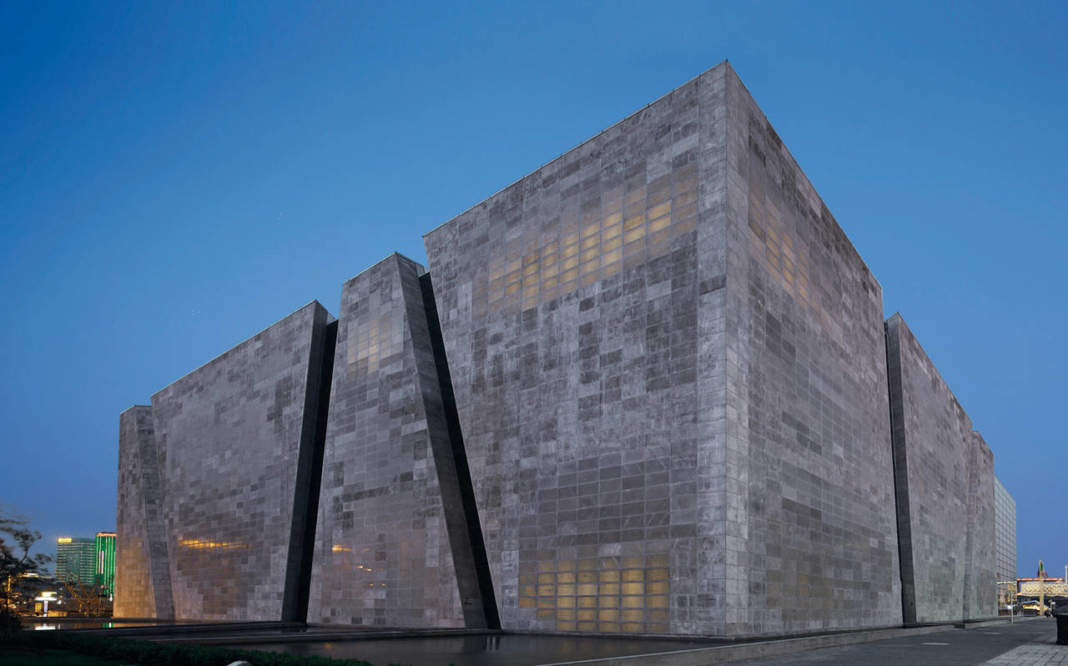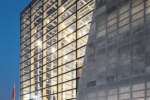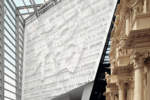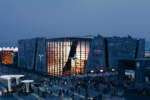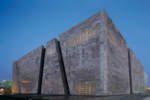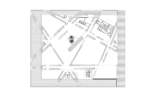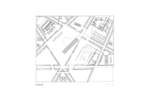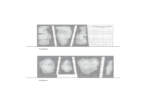architect: Giampaolo Imbrighi
location: expo 2010 shanghai
year: 2010
area: The theme of the Expo is “Better city, better life”, what is the Italian pavilion’s response to this motto? What is the idea which has inspired the project, winner of a competition which has seen the participation of 65 candidates?
Giampaolo Imbrighi: “Better City, Better Life”, the motto of the Universal Exposition of Shanghai, is a goal shared by all mankind: a better life in the future development of the cities on the planet. “Better City, Better Life” is a means of expressing the interest of the international community in town planning strategies and sustainable development. Mankind has always had expectations of a better life, throughout its history. The Expo 2010 is an opportunity to suggest solutions and models for the cities of the future, and harmonious urban life styles. Solutions, ideas, projects which will be presented to visitors from the whole world, in such a way as to interest and fascinate them.
It was the very theme of the Expo that suggested to us the challenge of a project made of spaces on a human scale, in symbiosis with contemporary models of social life, where the human being always plays the central role. According to the theme of Expo 2010, the Pavilion was to represent a showcase of the very best of Italian products associated with life quality in urban areas. One therefore wanted to present the new Italian trends in the fields of engineering, architecture and design, and innovative materials and technologies. It therefore seemed logical to use eco-sustainable construction techniques. It seemed proper that the form of the Pavilion should metaphorically illustrate the topographic complexity of Italian cities, with several buildings enclosed by a single pure volume, with their succession of narrow streets, courts and alleys which are suddenly dilated into open spaces of squares, not unlike what one encounters in traditional Chinese old towns. We have therefore designed a winter garden, alleys, and introduced water and natural light which is propagated in the environments, made rarefied by the patios and the lateral cuts, in such a way that the complexity of the space would create, at the same time, an effect of unbalance and of psychophysical comfort. This would be an important achievement, as it would enable us to make the Pavilion an as explicit as possible “expression of life quality”, which in its turn would help establish a relationship between the two countries.
The Italian Pavilion is therefore a true miniature city, with clear cultural references to the contents of the Expo, but above all to the composite character of our country; it tells the story about Italians, their creativity and their millennial culture. And indeed, the very motto of the Expo, “Better City, Better Life”, has been coined precisely to launch this challenge: the same theme has been interpreted as a message and auspice also in the design of new spaces on a human scale, in symbiosis with models of contemporary community life which always focus on the human being and the importance of sustainable and energy-efficient architectures. This theme has called for a profound integration between the various elements of the project, i.e. architectural and energetic-environmental aspects, systems and technical-constructive elements, and the use of innovative materials and techniques, also in relation to the highly original products which the Italian industry today offers the world. Other strong points may be retraced to the focus on functionality; for six months this structure will prove capable of attracting, welcoming and surprising countless visitors, thanks to an architectural quality which combines tradition and innovation, in harmony with the principle of bioclimatic and eco-sustainable functionality.
area: What element predominates in the project?
G.I.: The twelve, distinct asymmetric volumes form an architectural whole dominated by a balanced relationship between filled and empty spaces, between opaque and translucent or transparent surfaces, underscored by brusque perceptive changes that are only conveyed by the light.
One enters the large hall, flooded with light – a lung-space which has also been conceived to manage the flow of visitors during the peaks – to then venture on a complex itinerary through ample and narrow spaces, where the intensity of the light varies. From an aesthetic viewpoint, the light is the determinant element of the project; the true protagonist of the Pavilion, transparency, varies from the traditional consistency of glass to the diaphanous surfaces in the concept of transparency has always dominated architecture. And the architect has always been able to wield this instrument to predict and achieve various effects in his projects. The architect has determined the degree of transparency with the precise intention of denying it, regulating it or emphasizing it, as the case may be. Another aspect which should not be underestimated is the category of “pavilion”, which has always been characterized by architectural experiments, inventions and manipulations of the space, as this building type is unhampered by the customary schemes.
As a typical category, the pavilion therefore offers a unique opportunity for creative experimentation, inspired by the theme chosen for the exposition. It has therefore been possible to develop the research on the effect of transparency, understood as a phenomenon which makes it possible to attenuate or weaken the volumetric geometric consistency of a building without altering its image. In other words, what changes is the perception through the material of its shell, to the point that the architecture almost becomes indefinable.
area: Your project for the pavilion identifies a way to build in order to save energy; what stratagem for contemporary sustainability is proposed by the Italian pavilion as compared to the others present at the Expo, on the subject of sustainable architecture?
G.I.: This is the other essential theme of the project, and is witnessed by the fact that the Pavilion has fundamentally also been conceived as a “machine” of which particular function is the result of an equilibrated harmonization of active and passive bioclimatic strategies combined with an accurate use of the systems, which have been adapted to these strategies.
The need to focus on a sustainable and energy-efficient design, which is indeed part of the theme of the entire Expo 2010, has made it necessary to pursue a profound integration between the different elements as architectural and energetic-environmental aspects, systems and technical-constructive issues, as I mentioned a moment ago, but also to consider the recyclability of the materials. Put very briefly, the strategies proposed are determined by the system of the atrium which, in microclimatic terms, represents an area of transition and initial acclimatization with respect to the other spaces where the climate is more controlled. All this identifies a new way to build which is not only based on energy saving, which would indeed make little difference in a temporary exposition pavilion, but on a symbolic and repeatable application of a true bioclimatic function, where efficiency and efficacy would be tangible also in the concrete results.
area: And the relationship between the spaces and the function?
G.I.: It must first of all be pointed out that the flexibility and modularity required for the pavilion has featured two different aspects: an internal one, because the place was to be a venue for a great variety of complex events, performances and exhibitions, which would follow one another in a very rapid succession. But also, and above all, an overall flexibility, because it had been specifically established that it had to be possible to move the pavilion after the Expo, and thus to disassemble it and reassemble it in another site.
The project therefore features the adoption of structural solutions which make it possible to realize large spans, to guarantee the greatest possible formal, functional and distributive flexibility of the interiors.
The structural category which is best suited to temporary exhibition venues could only be one without cemented joints, with a load-bearing structure in steel.
We therefore wanted the structure that was ideated and then realized in the final project to be of a kind that facilitated the work at the building site and reduced the time required for installation.
The pavilion is not only, and simply, an important example of high quality architecture and design – it has received an award as the best structure realized in Shanghai in 2009 – but it is also an excellent concrete and permanent example of the levels reached by technology and by Italians.
area: What may the content of the events held in the pavilion during the Expo be considered as?
G.I.: The Italian Pavilion in Shanghai, example of sustainable architecture and avant-garde building techniques, will feature the most sophisticated novelties of the national productive system in the sectors associated with the organization of the urban environment: from new building materials to domotics, from non-polluting transports to the production of renewable energy, from the emergent trends in industrial design to the potential applications of nanotechnologies, among other things.
Italy is moreover interested in sharing the experience of its cities, which have maintained their vitality over the millennia and have repeatedly faced the dual problem of reconciling urban renewal with the protection of the historical heritage and the guarantee of a correct and productive relationship with the territory beyond the city limits.
From this point of view Italy, which is favoured by a remarkable natural environment and vaunts an immense artistic heritage, offers an incomparable workshop of ideas; the universal exposition of 2010 will represent an opportunity to exhibit the most important results in this context.
The forecasts indicate that it will be necessary, in the sprawling and densely populated city of tomorrow, to assimilate the new peripheral settlements, inserting them in the global network of communications, making them become sustainable by using innovative and eco-compatible technologies, to make cultural activities accessible in order to promote an involvement in the life of the community. Furthermore, Expo Shanghai 2010 will not be a mere showcase in which to offer the vast Chinese market the best of Italian products: it will above all be a great opportunity for communication and promotion for Italian companies, an appointment prepared with initiatives aimed at boosting the Italian presence on an economic and commercial level. China is a strategic partner, with which we aim to improve our commercial interchange.
Teacher at the Sapienza University of Rome since 1972, as a regular professor since 1981, Imbrighi teaches Architectural Technology. He is he author of numerous books and scientific publications, including: Housing categories and fruition (1974), Manual of the other architecture (1977), Transparencies: glass and synthetic materials (1985), Low-cost and subsidized housing, technology and design (1987), Architecture materials (1992), Eco-technologies for architecture (2004) and Architecture Design and Building (2010). Independent professional as architect and town planning, with a post-degree specialization from the University of Rome (study of movements) and the Tanajakademia of Szombathely, Hungary (town planning), he has designed and built public works. He has been awarded prizes and recognitions and is the winner of architecture competitions, the most recent of which is the Italian Pavilion at the Universal Exposition of 2010 in Shanghai.


